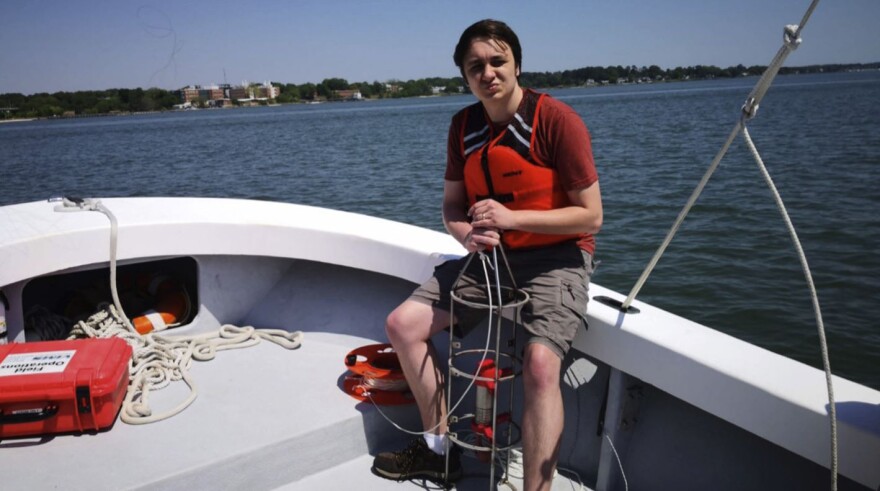Read the original story on WHRO's website here.
Marine heat waves are happening year-round in the Chesapeake Bay and climate change is likely to make them worse, according to new research out of the Virginia Institute of Marine Science.
A marine heat wave is similar to one on land: temperatures soar above normal for days or weeks at a time. They’re temporary periods of extreme warming, rather than gradual global warming that’s also happening in the water.
These hot spells can stretch far underwater, threaten wildlife and last longer than previously known, VIMS researchers wrote in a study published in the Journal of Geophysical Research.
They want to start filling in gaps in knowledge about marine heat waves, said lead author and doctoral student Nathan Shunk.
“We’re not really familiar with all the details” about these events, Shunk said. “And they can be important because they’re another stressor in the environment.”
Scientists worldwide started paying attention to the issue in earnest about a dozen years ago, after marine heat waves led to catastrophic coral bleaching where entire reefs were lost, he said.
The realization was “Oh, a large portion of organisms that we care about are dying. Why are they dying?”
The ocean absorbs 90% of the excess heat from global warming, according to the National Oceanic and Atmospheric Administration.
Last summer, marine heat waves made headlines in Florida, where corals faced the most extreme ocean temperatures on record. It was the longest-lasting underwater heat wave in three decades.
These warm stretches are natural occurrences, but are growing hotter and more frequent due to climate change, Shunk said.

Most available research about marine heat waves has focused on temperatures at the surface of the water, usually from satellite data, said VIMS assistant professor Piero Mazzini.
That data only captures a tiny portion of the water column — less than a finger deep, he said.
“We don't know what happens beyond that,” Mazzini said.
The VIMS team directed its research at those deeper, subsurface parts of the water — from about 3 feet under all the way to the Bay floor. That’s where most marine life lives, Shunk said.
Researchers drew from three decades’ of data from three different Chesapeake Bay monitoring programs. They found a few surprising things, Shunk said, including that heat waves in the Bay reach deeper in the winter.
During summer, the bulk of warming happens closer to the surface. That’s somewhat good news for marine life, because they can swim downward to cooler water, Shunk said. But in wintertime, temperature changes “went all the way down to the bottom.”
Plus, researchers found marine heat waves often are linked to expanding “dead zones,” where the level of oxygen dissolved in the water drops to lethal levels for wildlife.
That could cause “a squeeze of available habitat during marine heat waves” — no matter the season, Shunk said.
People who interact with the Bay across the watershed will feel the impacts, he said, such as “if you like going recreational fishing and the burning heat waves are changing where the fish are or causing fish to die.”
Mazzini said he hopes decisionmakers will pay attention to the problem when deciding how to manage the Chesapeake Bay.
“If we don’t do anything, we are going to have serious problems with the ecosystem,” he said.


